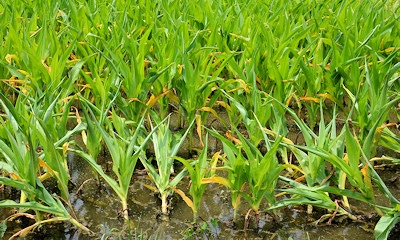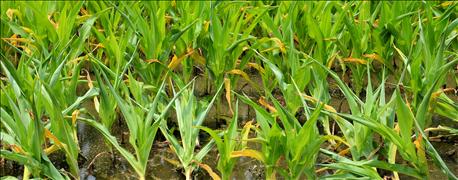
If you have typically used starter fertilizer but aren’t planning to this year due to cost, maybe you are having second thoughts. If you haven’t used it but aren’t happy with early growth, especially in last year’s wet spring, maybe you’re thinking about applying starter this year. Here are five questions you should ask before you make your final decisions, and decide the ‘what, if’s and how’s’ of starter fertilizer.
Bob Nielsen provides the answers. He is the Purdue University Extension corn specialist.
1. Does applying starter fertilizer pay?

N PAYS OVER TIME: If you get a cool, wet spring, odds are higher that starter fertilizer will pay and then some. However, you don’t know ahead of time whether it will be a cool, wet season or not, says Bob Nielsen.
No, not every year. Starter fertilizer is a form of ‘crop insurance.’ Response to row starter is more likely when the first 30 days or so after planting are cold, wet and otherwise challenging for stand establishment. When early season conditions are favorable for stand establishment, row starter will probably not increase yields, even though crop appearance may look better. Don’t forget to take credit for N, P and K content of the starter fertilizer when determining fertilizer application rates.
2. Do you need phosphorus in the starter?
That depends upon soil test levels. As long as phosphorus test levels are adequate to high, then you normally wouldn’t expect a yield response to phosphorus in the starter, Nielsen says. When soil test phosphorus levels are good, their standard recommendation is to use 28% or 32% liquid N, whichever one is available in your area. Eight gallons per acre of 28% N provides 24 pounds of N per acre.
3. Should you count the amount of N applied with starter toward your total N applied for the year?
Absolutely, Nielsen says! Make sure to take credit for it when figuring out how much additional N to apply. For example, if you want to apply 200 pounds of N per acre, and you apply 24 pounds per acre of N as starter, you only need to apply 176 pounds per acre, either sidedress or pre-plant.
Related: 3 questions you should answer about your soil fertility program
4. Are you talking apply starter fertilizer 2 by 2 or in-furrow with the seed?
Nielsen’s recommendations refer to applying N starter two inches to the side and two inches below the seed. “We haven’t seen consistent benefit from applying starter in-furrow,” he says. Besides, applying too much N directly with the seed can damage germination and seedling growth.
5. Is there any way to know in advance if it might be a year when starter will or won’t pay?
No one’s crystal ball is that good, Nielsen says. “We’re in a period of weather variability, and you don’t know what the season will be like, but the odds are it will be extreme,” he says. By applying starter your crop is prepared if it is a year when starter fertilizer might pay off more, such as in a cool, wet season.
About the Author(s)
You May Also Like




